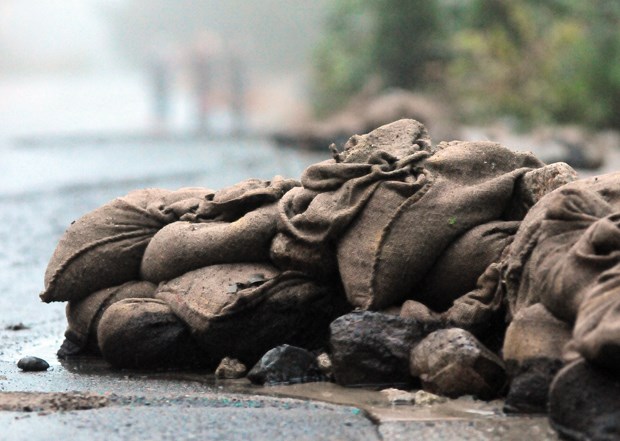The recent flooding of streets and homes in North Vancouver has left many families scrambling to save their soaked possessions.
My sympathies go out to all those residents affected by the flood. I'm sure flood victims aren't thinking about their gardens at this time. However, once interior cleanup operations are complete, they'll inevitably turn their attention to their yards.
To help with cleaning up the garden after a flood, here's some useful tips.
Document everything with photographs
Photographs of flood damage will help clarify any insurance you may be able to claim. Photograph all areas of the yard and garden that were impacted by flooding. Be sure to set your camera to record date and time on the photo. Take multiple pictures from many angles to show the flood damage.
Safety first
Flooding can cause the soil to become waterlogged and liquefied so be careful when approaching any cleanup in the yard. Use a metal bar or piece of wood and poke it into the ground to assure firmness to see if the soil is safe to walk on before you start removing sediment. Check carefully for any holes or subsurface caverns that may have been created by the flood.
If the sewer system in your area backed up as a result of the flood, the sediment may be contaminated. Check with local authorities to find out if the sanitary system backed up. Storm sewer water is generally cleaner than sewer water; however, storm sewer water can contain oil, transmission fluid, antifreeze and other residue from automobiles.
Check the surface of the flood sediment for the presence of any sheen that may indicate contamination. Or smell the sediment for suspicious odours. The use of personal protective equipment may be required if contaminated sediment is found. If you suspect contamination, wear gloves and wash your skin with soap and water after cleaning up sediment.
In most instances the water coming out of local creeks was above the level of the underground sewer system, so it is probable that all you have is clean sediment and rocks in the yard.
What to do with all that rock and sediment
The emotional impact of flooding can be devastating to those affected. Once you have emotionally recovered from the flood, consider the silver lining - lots of rocks to build things in the garden. I am not trying to be funny. Why pay someone to haul away rock that you may go out and buy in the future? It does not apply to everyone but there are possibilities if you look for them. Small pebbles can be used for mulching or creating pathways. Larger rocks and boulders can be used to build walls or as structural accents in the garden. Reusing those rocks will save money on disposal costs. As for sediment, most of it will likely be fine sand and small gravel, which is not useful for building beds, but it may be useful for fill in certain areas. If any logs ended up on your property use them in the garden to provide accents and homes for beneficial soil organisms.
What about my plants?
Much depends on the depth of sediment deposited in your yard. Any layer of sediment thicker than a couple of inches will have to be removed. Thick layers of sediment can prevent oxygen exchange with the soil that will negatively affect plant health. It's not
necessary to remove every last inch of sediment from planted areas or lawn, except if contaminated. Thin layers of sediment, about an inch or so, can be left and loosened with a digging fork to allow integration into the soil profile. The lawn does not need replacement, just rake and clean it so that at least half of the lawn grass's leaf is exposed and the sediment will act as topdressing, especially if it's sand.
Does my driveway, walkway or patio need repair?
If the flood water ran over the surface of those features and did not undermine anything, then chances are that surface cleaning is all that is needed. If those features were properly constructed with a compacted granular base, there may be no problem.
Check the surface of hard features, like pavers and concrete walkways, to see if distortion or cracking has occurred. If the surface is still level and free of new cracks then there is likely no problem.
Try to see change as a good thing. It's easy to say that when it's not my yard. However, if sufficient flood damage occurred in the garden it may provide the opportunity to change things that were not optimum. Don't just put things back to how they were.
Think of new possibilities before you jump to re-establish the status quo in the garden.
Todd Major is a journeyman horticulturist, garden designer and builder, teacher and organic advocate. [email protected]



